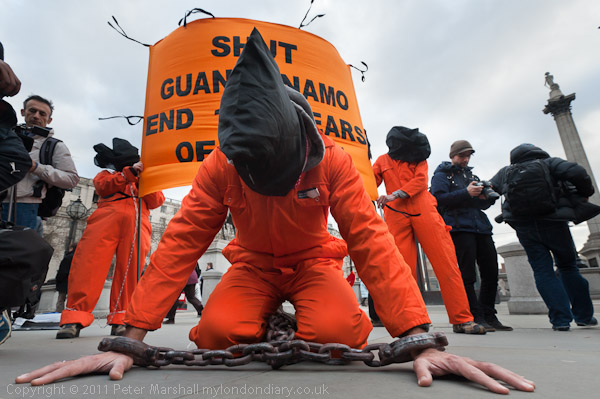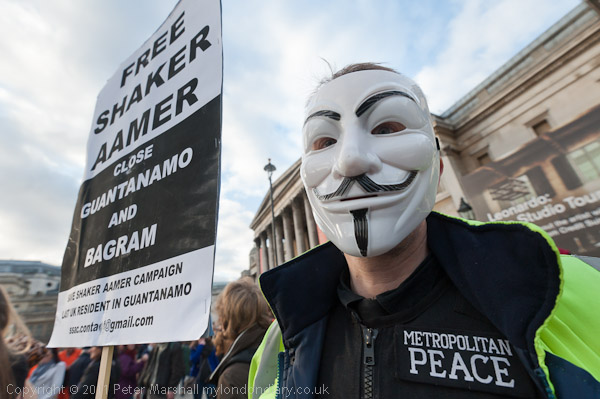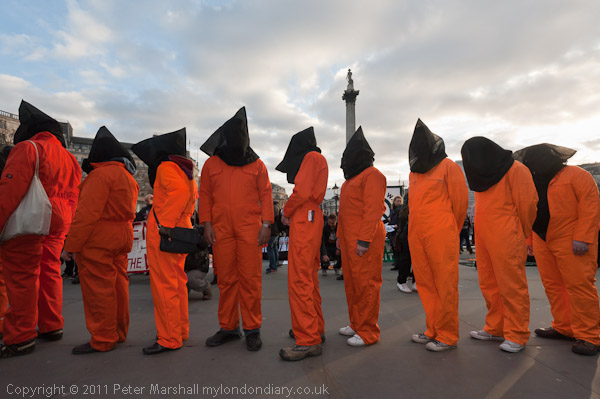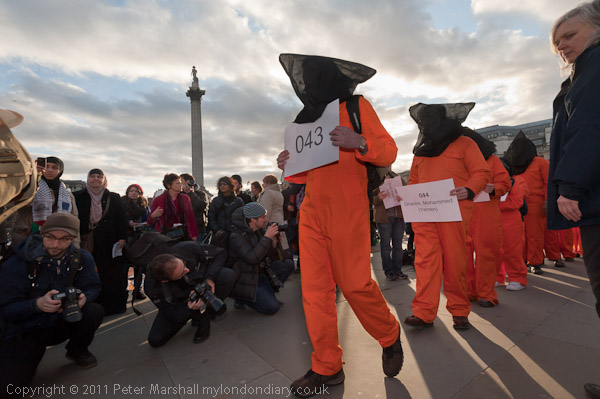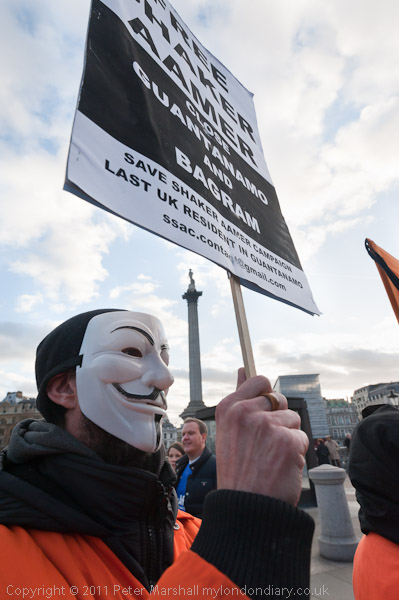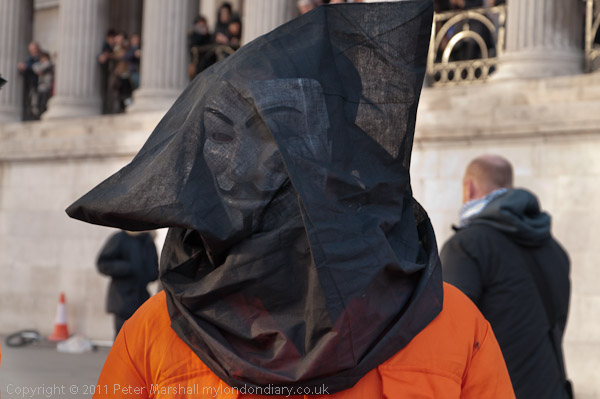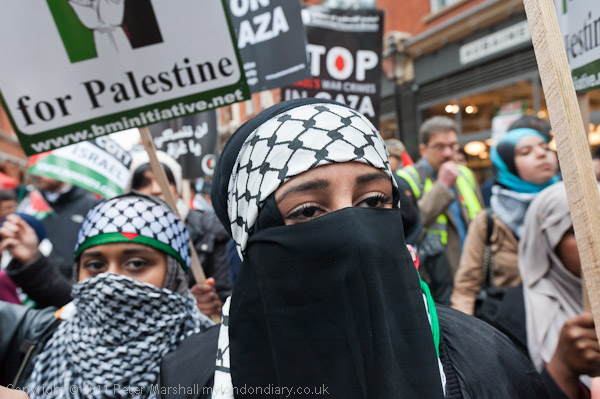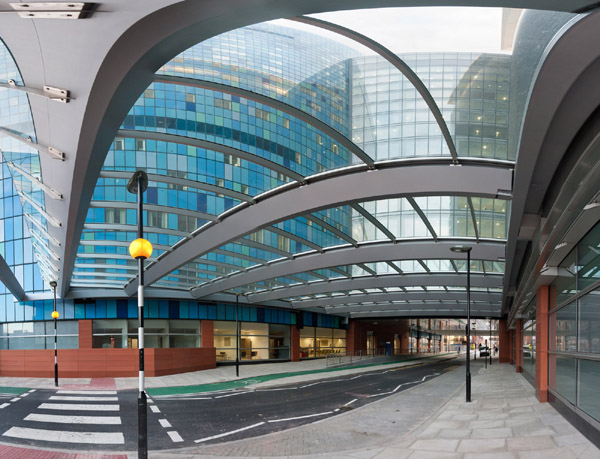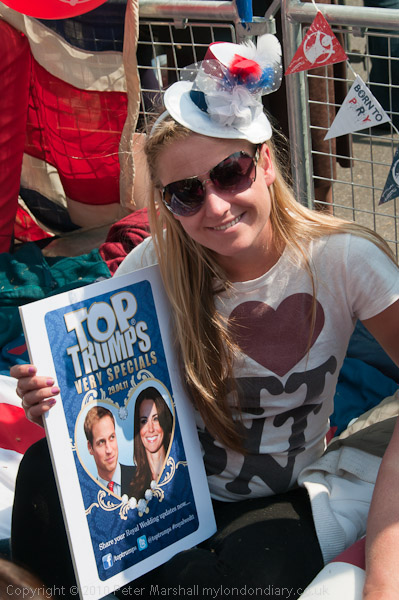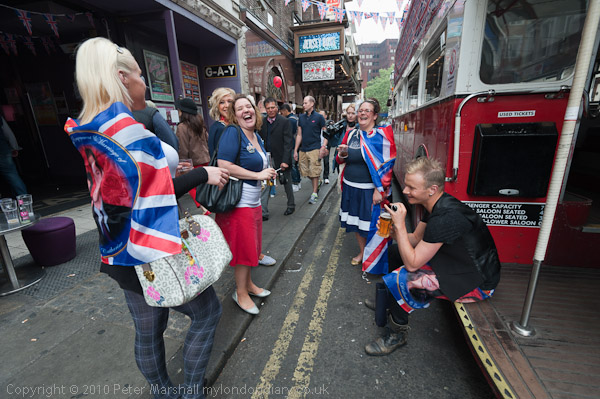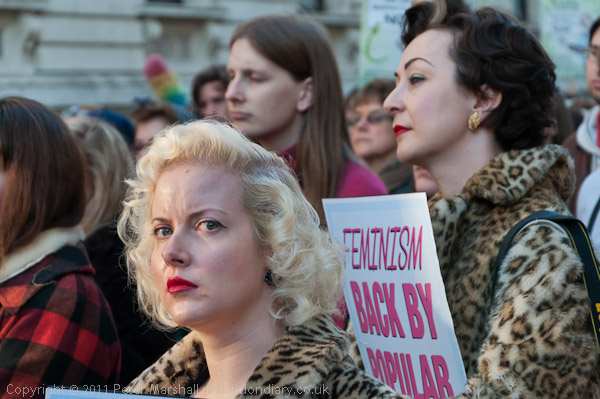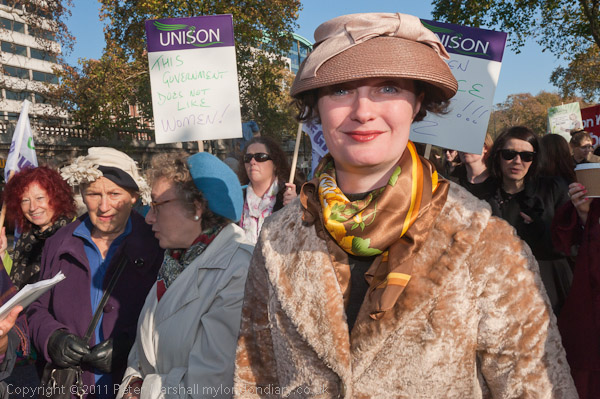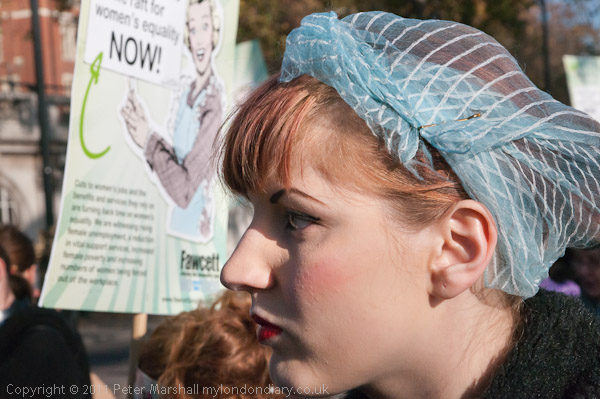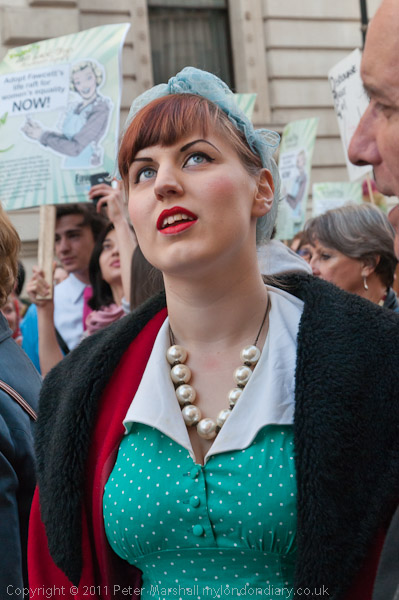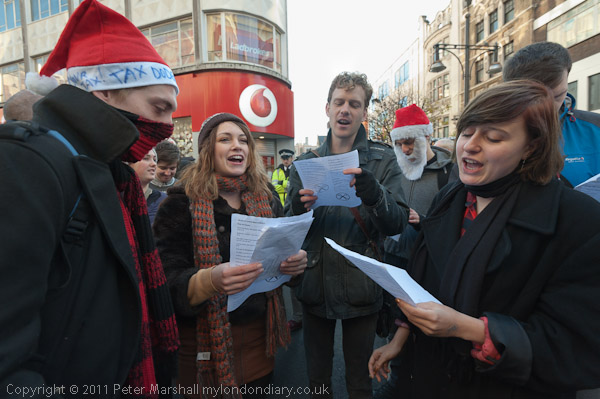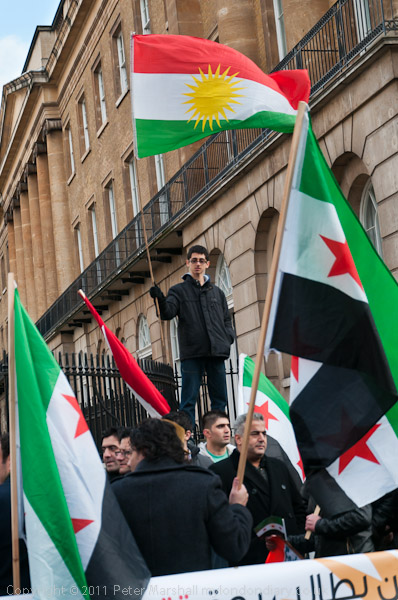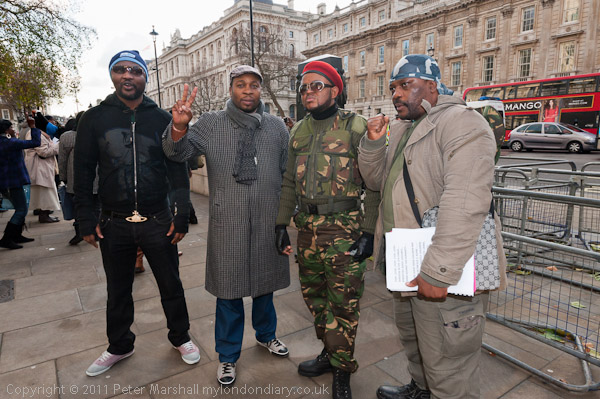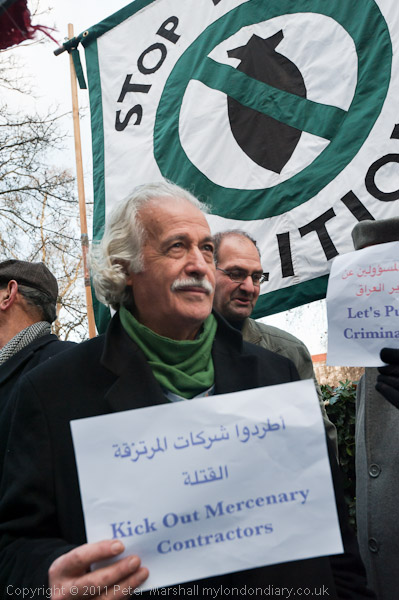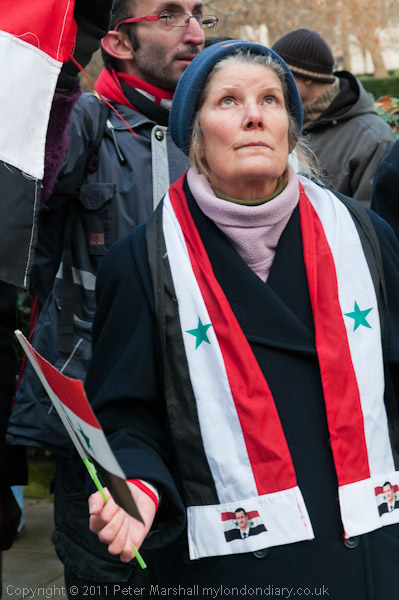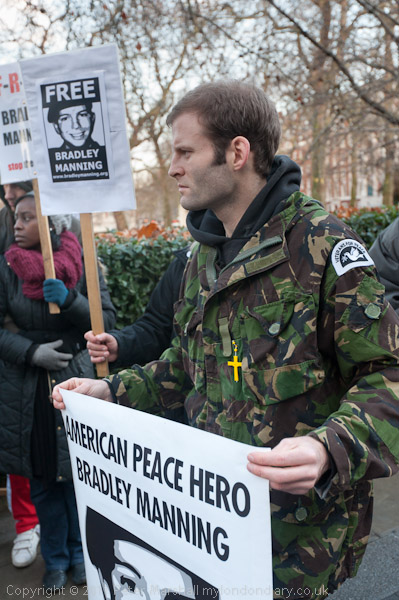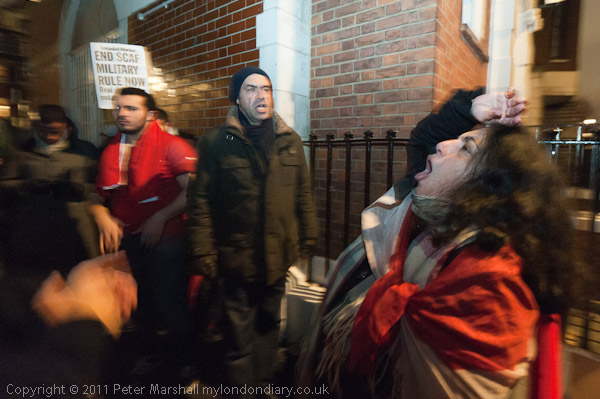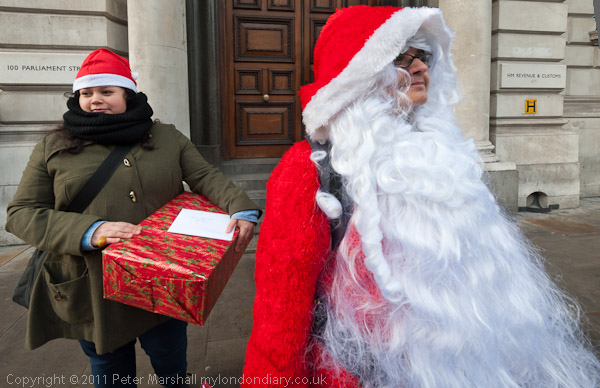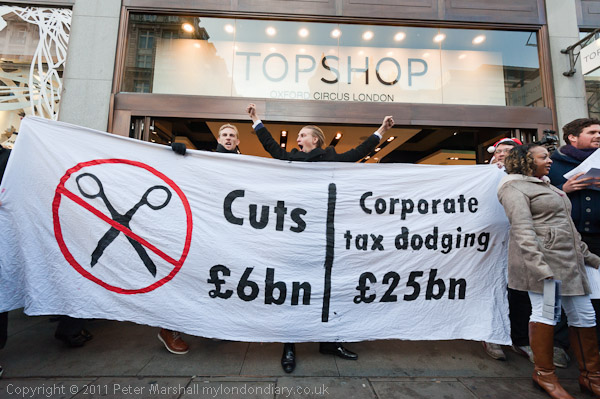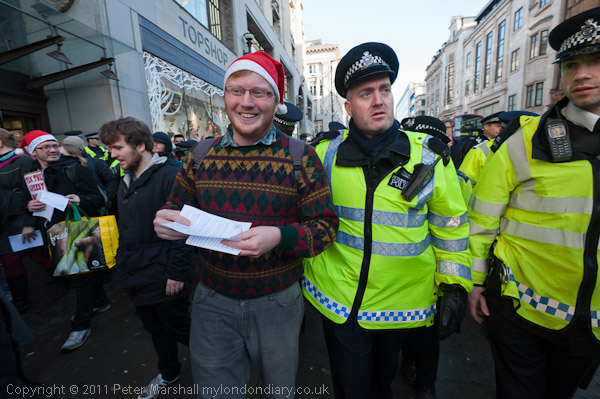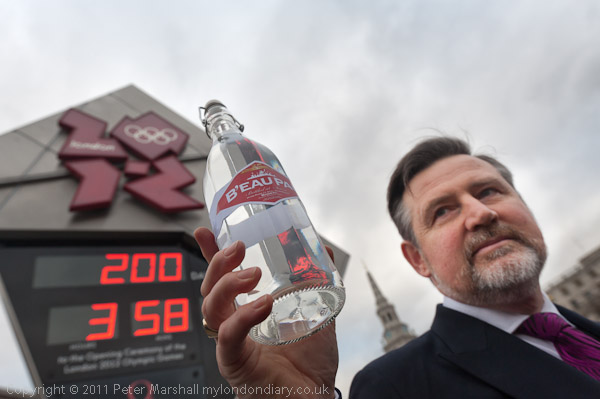
The story was about the Olympics and the campaign to get Dow Chemicals dropped as a sponsor for it because of their environmental record, and in particular for their refusal to take responsibility for the continuing poisoning of groundwater in Bhopal after the Union Carbide plant their was abandoned following the largest ever environmental disaster yet.
The Labour Friends of India had organised a ‘photo-opportunity’ to take place in Trafalgar Square in front of the Olympic clock exactly 200 days before the start of the London Olympics, with a banner reading ‘200 days to drop Dow’ in a passable pastiche of the Olympic logo and a bottle allegedly containing water from Bhopal with a rather nicely designed spoof mineral water label as ‘B’eau Pal’ water.
Holding this was Labour MP Barry Gardiner, and also present was a woman who had been in Bhopal at the time of the massive poison gas escape that killed thousands, including her aunt. Also present, by the time things got underway were around 3o photographers and videographers, ensuring that there was something of a scrum, as well as several of the ‘Heritage Wardens’, the Mayor of London’s security staff who hadn’t known this was going to happen and were not too happy with it.
It was tricky to get anything just a little different in such a situation and I didn’t really manage it. A straightforward picture or two of the banner and people in front of the clock – perhaps this was the best:
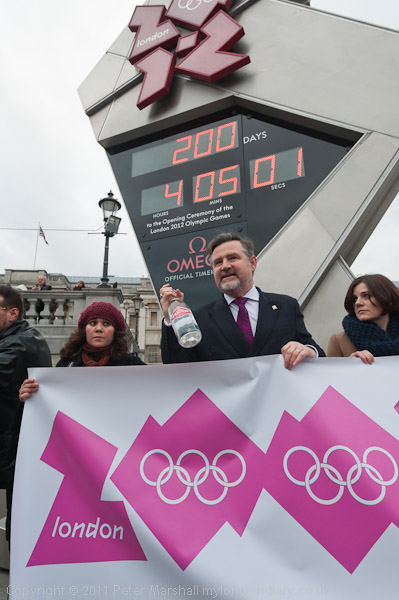
and several pictures of the MP with the bottle – here’s another
as well as several of Bhopal survivor Farah Edwards, including some of her reading her speech
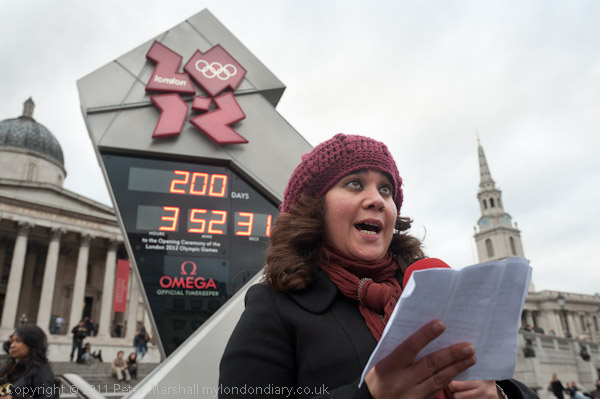
were the best I could do in the circumstances. Perhaps I might have arranged something with a little more interest, but I don’t like to arrange things. I’ve not seen any of the pictures the other photographers got, but I doubt if they were very different.
Demotix were obviously very worried about running the story, perhaps because of the draconian legislation around the Olympics here, and their claims to own as trademarks things like London, 2012 and Olympics. I twice posted a comment to the story, but all that appeared was a message saying my comment was awaiting moderation. Two days later it still hasn’t appeared. I’ve never known comments being moderated before on the site, usually they have appeared immediately.
What I posted in the comment was simple history about Dow Chemicals and their involvement in Vietnam, both producing napalm for use by US forces (and they continued to produce it after the other companies in the business had been persuaded to halt production) and as one of the companies producing Agent Orange, a dioxin contaminated herbicide which as well as killing the crops on which the rural population depended as an intended part of the military strategy also has resulted, according to the Vietnamese, in 400,000 people being killed or seriously maimed and half a million children born deformed because of its use.
Photographer Philip Jones Griffiths heard about the effects of Agent Orange, and returned to Vietnam to take pictures. He met with a great deal of cover-up – as he wrote in an introduction to his work on the Digital Journalist site:
In almost all cases I was denied access, usually by polite smiling nuns. At the risk of sounding paranoid I became convinced they had been told to keep the press away… I left Vietnam in the summer of 1971 without ever seeing a victim.
After the war had ended he returned – and saw and photographed the full horror of the situation. The gallery of images on-line doesn’t make easy viewing and it is a history that for me makes Dow a totally unsuitable company to sponsor either the Olympics or the Paralympic Games.
________________________________________________________
My London Diary : Buildings of London : River Lea/Lee Valley : London’s Industrial Heritage
All photographs on this and my other sites, unless otherwise stated are by Peter Marshall and are available for reproduction or can be bought as prints.
To order prints or licence to reproduce images
________________________________________________________
